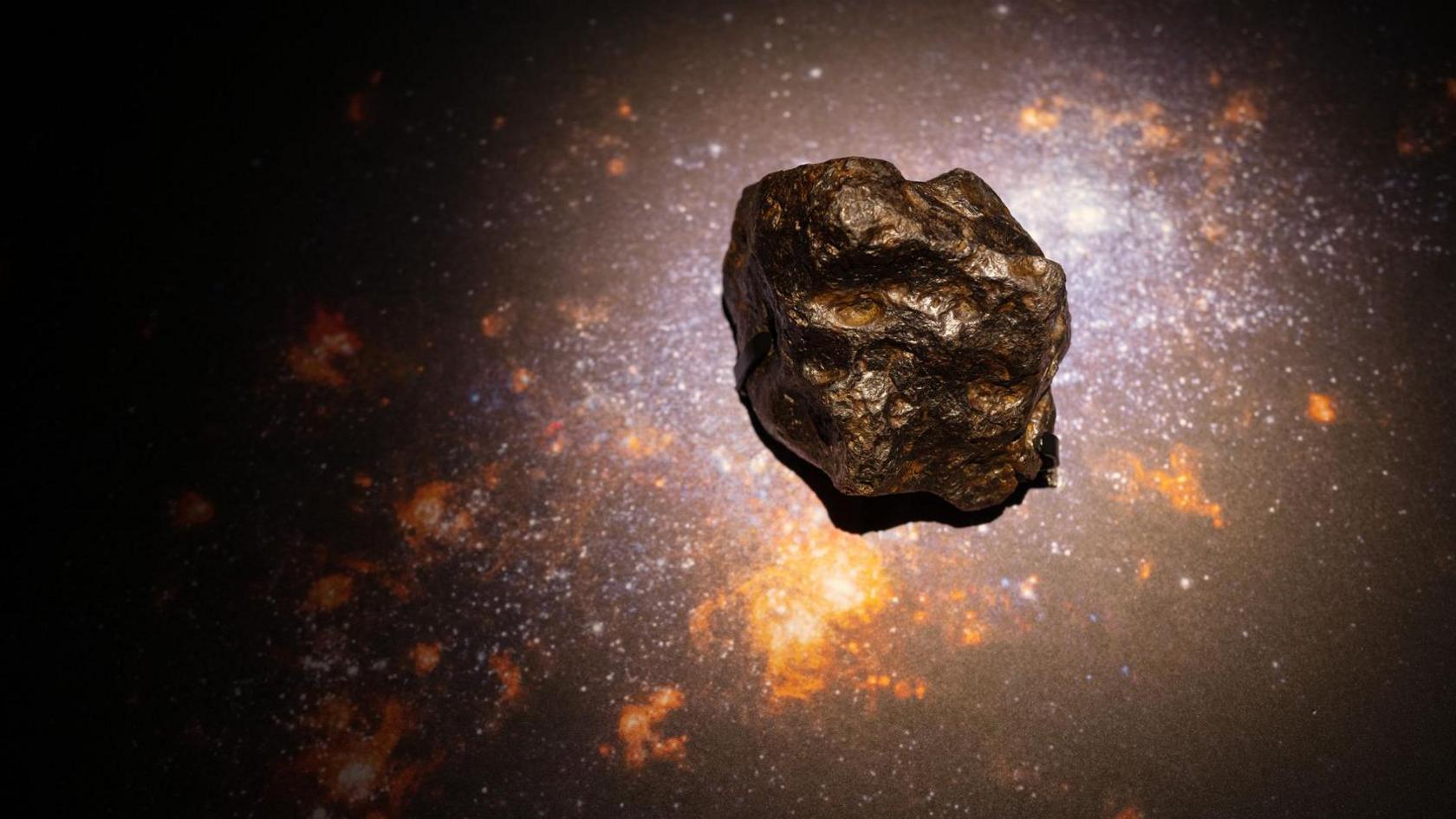How an ancient meteorite that struck Earth caused life to bloom

- Published
When we think of a giant meteorite crashing into Earth, it doesn't sound like good news.
But new research suggests ancient life on our planet may have thrived after a meteorite four times the size of Mount Everest slammed into Earth.
Billions of years ago, meteorites hit Earth frequently.
This particular space rock, called the S2 meteorite, collided with the planet around 3.26 billion-years-ago, and after that certain life forms began to bloom.
More amazing meteor stories
- Published19 September 2023
- Published15 September 2022
- Published4 days ago
What happened when the S2 meteorite struck Earth?
Evidence of the impact can be found at the Barberton Greenstone Belt in South Africa
The S2 meteorite is estimated to have been up to 200 times larger than the one that wiped out the dinosaurs.
It struck when Earth was still in its early years and looked very different. It was a water world with just a few continents sticking out of the sea.
These events - which can cause the sea to boil, or a blanket of dust to block sunlight from reaching plants - are usually considered to be disastrous for life.
But new analysis, that's been published in the Proceedings of the National Academy of Sciences journal, suggests the S2 meteorite triggered a giant wave called a tsunami. This mixed up the ocean and flushed material from the land into coastal areas.
Heat from the impact caused the top layer of the ocean to boil off, while also heating the atmosphere, and a thick cloud of dust blanketed everything, experts say.
Evidence of what happened can be found in the Barberton Greenstone belt of South Africa.
How was the meteorite good news for Earth?
A bed of rock showing chunks of ripped up seafloor from the tsunami that followed the impact
Scientists hiked to the impact site in South Africa to chisel off chunks of rock to understand the crash.
According to the research, bacterial life bounced back quickly. There were big increases in the number of organisms that feed off the elements phosphorus and iron.
Iron was likely stirred up from the deep ocean into shallow waters by the tsunami, and phosphorus was brought to the planet by the meteorite itself.
Bacteria built the world as we know it today, through creating the complex cells we need for life. Experts suggest this shift towards iron-favouring bacteria is a key piece of the puzzle for understanding early life on the planet.
Nadja Drabon, from the University of Harvard, who is lead author of the new research, said: "We think of impact events as being disastrous for life.
"But what this study is highlighting is that these impacts would have had benefits to life, especially early on... these impacts might have actually allowed life to flourish."
More 'out of this world' stories
- Published28 June
- Published1 May
- Published17 July
